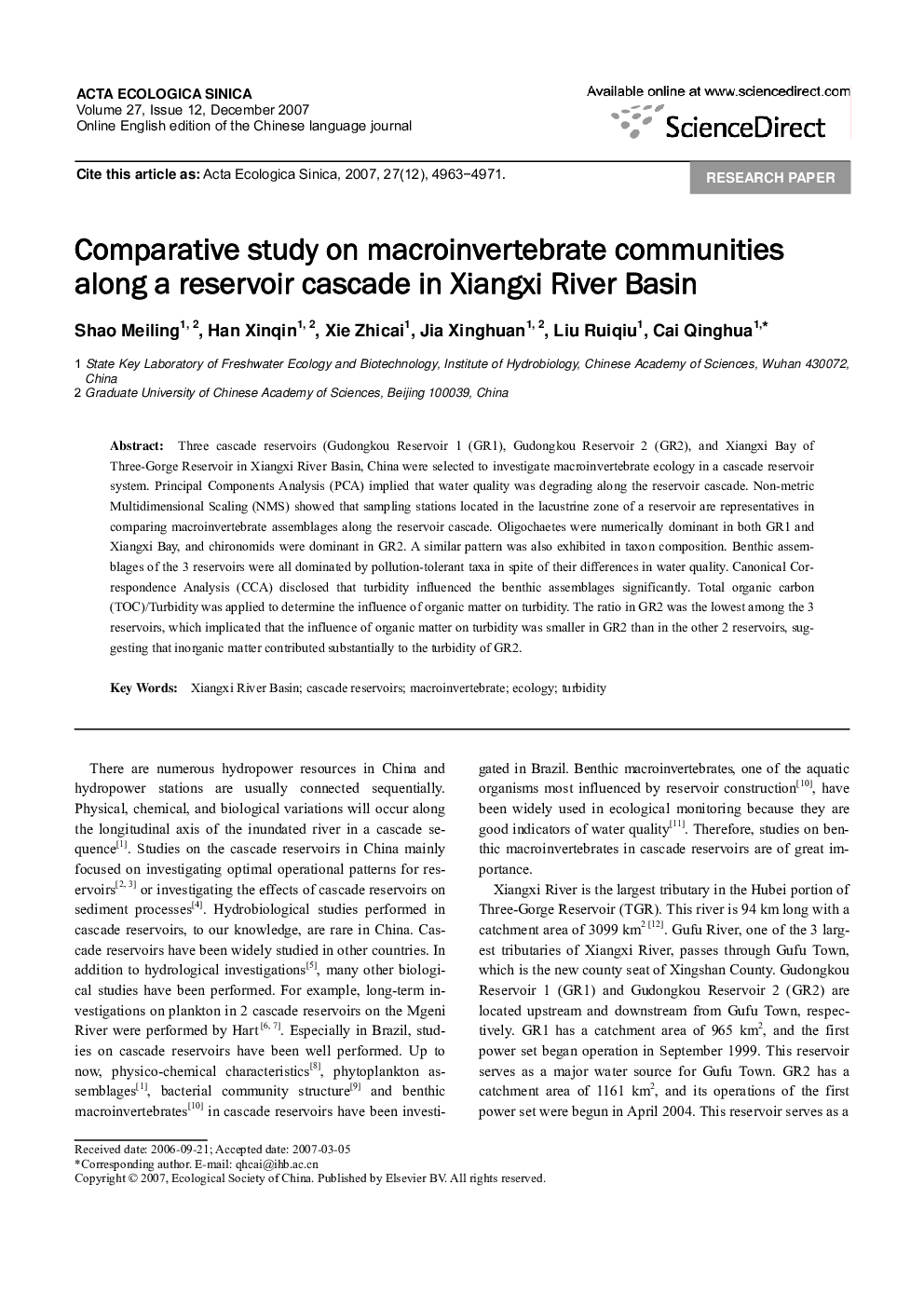| Article ID | Journal | Published Year | Pages | File Type |
|---|---|---|---|---|
| 4380371 | Acta Ecologica Sinica | 2007 | 9 Pages |
Three cascade reservoirs (Gudongkou Reservoir 1 (GR1), Gudongkou Reservoir 2 (GR2), and Xiangxi Bay of Three-Gorge Reservoir in Xiangxi River Basin, China were selected to investigate macroinvertebrate ecology in a cascade reservoir system. Principal Components Analysis (PCA) implied that water quality was degrading along the reservoir cascade. Non-metric Multidimensional Scaling (NMS) showed that sampling stations located in the lacustrine zone of a reservoir are representatives in comparing macroinvertebrate assemblages along the reservoir cascade. Oligochaetes were numerically dominant in both GR1 and Xiangxi Bay, and chironomids were dominant in GR2. A similar pattern was also exhibited in taxon composition. Benthic assemblages of the 3 reservoirs were all dominated by pollution-tolerant taxa in spite of their differences in water quality. Canonical Correspondence Analysis (CCA) disclosed that turbidity influenced the benthic assemblages significantly. Total organic carbon (TOC)/Turbidity was applied to determine the influence of organic matter on turbidity. The ratio in GR2 was the lowest among the 3 reservoirs, which implicated that the influence of organic matter on turbidity was smaller in GR2 than in the other 2 reservoirs, suggesting that inorganic matter contributed substantially to the turbidity of GR2.
